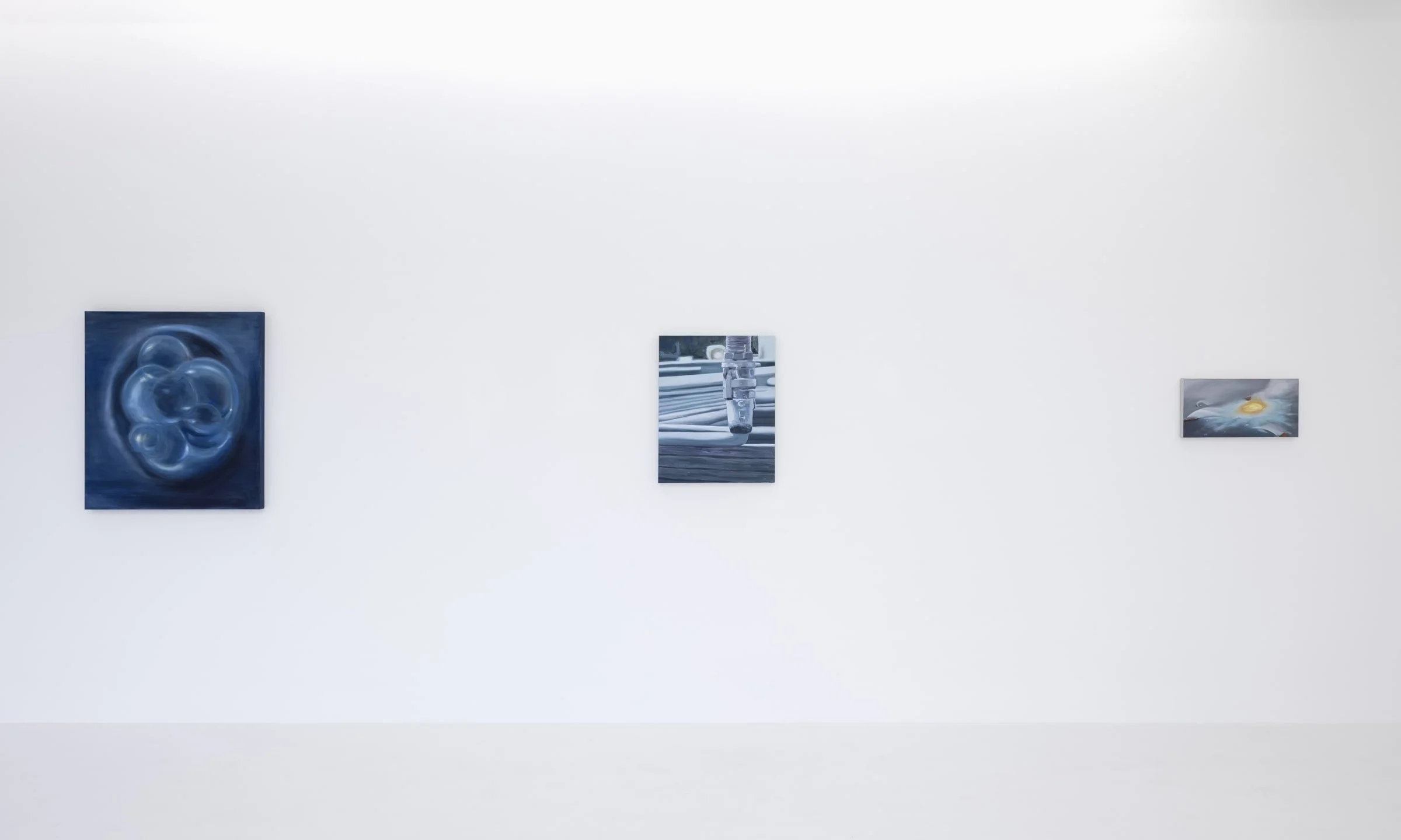Embryo, 2022
Embryo, 2022
Painting - Oil on linen
102 x 91 cm (40 x 36 in)
DAWN, September 9 – October 7, 2022, Peres Projects, Berlin
Embryo (2022) continues the exploration of fertilization stages and embryonic development. Enabled by current imaging technologies, the embryo is visualized to inspire reflection on the origins of life. Building upon First Week, which depicts the developmental process of the embryo, Embryo narrows its focus to a specific stage of fertilization, examining life's inception. The embryonic cell is observed in greater depth, enlarged by the possibility of modern technology. The circle in the embryo embodies a significant force, replicating genetic information that can now be studied with precision.
Embryo also celebrates the opportunities technology has afforded artists, showcasing how advancements have expanded the boundaries of creative expression. Whereas painting was historically confined to documenting visible reality, Tan Mu employs the medium within the realm of technological advancements, archiving moments in the painting medium that would never have been feasible.
DAWN, September 9 – October 7, 2022, Peres Projects, Berlin
DAWN, September 9 – October 7, 2022, Peres Projects, Berlin
Q: Embryo and First Week both depict the developmental process of an embryo. Can you talk about their connection?
Tan Mu: Both Embryo and First Week are deeply interconnected as parts of my exploration of life’s origins. First Week traces the biological progression of an embryo, focusing on the early stages of fertilization and growth. It captures the evolution from a single-celled zygote into a more complex form, emphasizing the beauty and abstract simplicity of these early structures. Embryo, on the other hand, narrows its focus to a specific stage in the fertilization process. By observing the embryonic cell in greater detail—enlarged and clarified through the lens of modern imaging technology—it delves deeper into the force and potential encapsulated in this microscopic form.
What ties these works together is their continuity: both pieces reflect on the universal beginnings of life. They explore how simple, abstract forms gradually transform into complex systems, encapsulating the essence of growth and interconnectedness between nature and humanity.
Q: You’ve mentioned technology. How has technological advancement expanded the boundaries of creative expression and become a medium for you to explore and reveal the intricate details of the microscopic world?
Tan Mu: Modern technology has profoundly shaped the way I approach my art. The imaging tools we have today allow us to visualize details that were inaccessible to artists centuries ago. For example, through microscopic imagery, I can observe the cellular and genetic structures that form the foundation of life. This technology doesn’t just enhance my ability to document reality—it pushes the boundaries of what painting can capture, inviting me to archive moments and perspectives that were previously invisible.
In works like Embryo and First Week, technology serves as both a tool and a source of inspiration. It enables me to study the silent yet powerful processes of growth and transformation. By integrating these scientific perspectives into my art, I can expand creative expression beyond the visible world, bridging the gap between biology, mathematics, and visual aesthetics.
Q: Many of your works depict spherical forms that encapsulate information, ranging from microscopic embryos and cross-sections of fiber-optic cables to the vastness of the cosmos. Could you elaborate on your insights into this recurring theme?
Tan Mu: Spherical forms have always fascinated me because they embody the idea of universality and interconnectedness. Whether it’s the circular structure of an embryo, the toroidal flow of energy, or the mathematical patterns of the universe, these shapes represent fundamental energy flows and structural logic. To me, they are symbols of both the microcosm and the macrocosm—small yet infinitely expansive.
When I meditate on these forms, I see a topology of the torus, a shape that resonates across life’s origins, from bacteria to chemical fission processes to celestial bodies. This pattern reflects the permanence and infinity of nature’s energy flow, connecting the natural world with human understanding.
I’m also intrigued by how everything around us is encoded, digitized, and mediated through technology, yet there’s a silence and humility in the beauty of these forms. They remind me of nature’s balance, transience, and resilience. This “nature-based” aesthetic helps me create a connection between the timeless patterns of the universe and our own fleeting existence, offering a sense of balance in the chaos of modern life.




